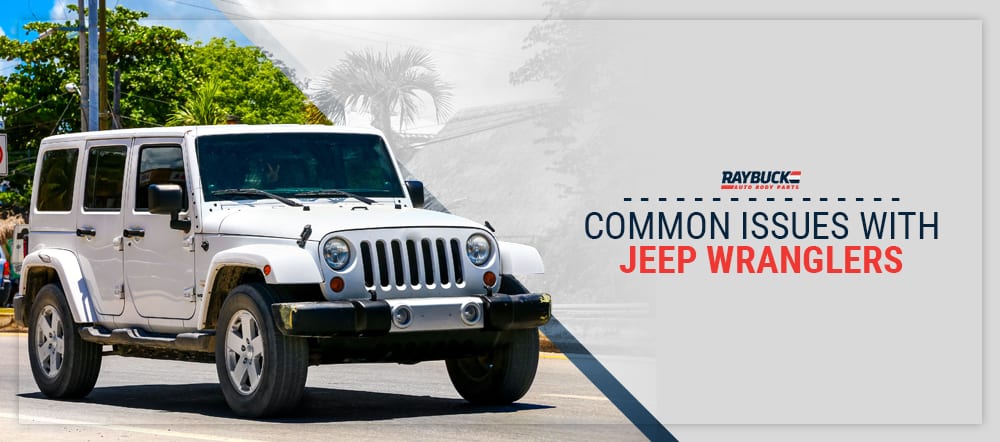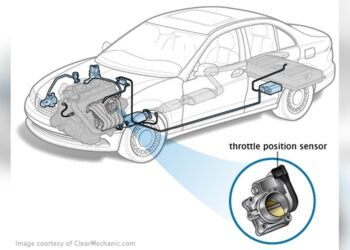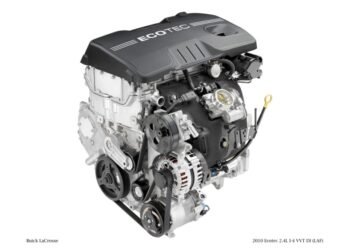Are you thinking about buying a Jeep Wrangler or already own one? It’s no secret that the Wrangler is an iconic off-road vehicle with a loyal fan base.
But let’s be honest—like any vehicle, it’s not without its quirks. From mechanical issues to everyday annoyances, there are a few common problems you should know about. Why? Because being informed means you can tackle these challenges head-on and avoid costly surprises.
Stick around, and we’ll walk you through the most frequent Jeep Wrangler problems and how to handle them. Understanding your ride better could save you time, money, and frustration down the road. Let’s dive in!

Credit: www.youtube.com
Engine Issues
Jeep Wranglers are beloved for their rugged design and off-road capabilities, but they’re not immune to mechanical issues. Engine problems are among the most common complaints Wrangler owners face. If you’ve ever dealt with oil leaks, overheating, or a mysterious engine stall, you’re not alone. Let’s break these issues down so you can spot them early and keep your Wrangler running strong.
Oil Leaks And Seals
Oil leaks are a headache many Jeep Wrangler owners encounter. Common culprits include worn-out valve cover gaskets, oil pan gaskets, and rear main seals. If you spot oil stains on your driveway, it’s time to check under the hood.
Ignoring oil leaks can lead to bigger issues, including engine damage. Make it a habit to inspect your engine area regularly. A quick look could save you from an expensive repair bill.
Have you noticed your oil levels dropping faster than usual? It might be more than just an old gasket—cracked seals or improperly installed parts could be to blame. Address these issues promptly to avoid long-term engine trouble.
Overheating Challenges
Wranglers are built to handle tough terrain, but overheating can bring even the toughest models to a halt. This issue often stems from a faulty radiator, clogged coolant passages, or a failing thermostat. If your temperature gauge keeps climbing, don’t ignore it.
Off-roading in high heat or towing heavy loads can make overheating more likely. Carry extra coolant when hitting the trails, and check your radiator for debris after every trip. Prevention is key—an overheated engine can leave you stranded in the middle of nowhere.
Think your Wrangler is overheating because of an old thermostat? Replacing it is a simple and affordable fix. Waiting too long, however, can damage your engine and turn a $20 part into a $2,000 repair.
Faulty Crankshaft Position Sensor
Does your Wrangler stall at random or refuse to start sometimes? A faulty crankshaft position sensor might be the issue. This small but crucial component tells your engine when to fire, and when it fails, chaos ensues.
Symptoms include intermittent stalling, rough idling, or a complete failure to start. A bad sensor can also trigger your check engine light. If this happens, run a diagnostic scan to pinpoint the issue.
Replacing the crankshaft position sensor isn’t overly complicated, but it’s not something you want to delay. Think about it—would you rather replace a sensor at home or call for a tow from a remote trail? The choice is yours.
Engine issues can feel overwhelming, but they’re manageable when you stay proactive. Which of these problems have you faced, and how did you handle it? Share your tips below to help other Jeep Wrangler enthusiasts keep their rides in top shape.

Credit: www.youtube.com
Electrical System Faults
The electrical system in a Jeep Wrangler is essential for smooth operation. It powers vital components like lights, windows, and ignition. Yet, many owners face recurring issues that can disrupt functionality. Understanding these problems helps in better maintenance and quicker fixes.
Malfunctioning Tipm
The TIPM (Totally Integrated Power Module) is the brain of the electrical system. Its failure can lead to erratic behavior in various components. Drivers may notice headlights flickering or fuel pumps not working. This issue is common in older Wrangler models and may require module replacement.
Battery Drain Problems
Excessive battery drainage is a frequent complaint among Wrangler owners. Poorly grounded wires or faulty alternators are common culprits. A weak battery can leave you stranded without warning. Regular checks and timely replacement can prevent this frustrating issue.
Faulty Wiring Harnesses
Wiring harnesses play a crucial role in connecting electrical parts. Damaged or worn-out harnesses can cause intermittent power loss. This issue often arises due to age or exposure to harsh conditions. Inspecting wires for damage can help identify the problem early.
Suspension And Steering Concerns
Jeep Wranglers are known for their off-road prowess, but their suspension and steering systems can sometimes be a source of frustration for owners. These issues often impact both the driving experience and safety, especially at higher speeds or on uneven terrain. If you’ve been noticing odd vibrations or steering challenges, you’re not alone—many Wrangler owners share similar complaints.
Death Wobble Phenomenon
The infamous “death wobble” is a term that strikes fear in the hearts of Jeep owners. It’s a violent shaking of the steering wheel that can occur when you hit a bump or pothole at speed. This happens due to loose or worn components in the suspension or steering system, such as track bars or tie rods.
To fix this, start by inspecting the front-end components for wear. Tightening loose bolts or replacing damaged parts like bushings can often resolve the issue. Don’t ignore this problem—it can worsen over time and lead to bigger repair costs.
Have you experienced this before? If so, pay attention to early signs like minor vibrations before they escalate into full-blown wobbling.
Steering Drift Problems
Does your Jeep seem to pull to one side while driving? Steering drift is another common concern with Jeep Wranglers, especially if you’ve upgraded to larger tires. This issue can stem from improper alignment, worn tie rods, or even an uncalibrated steering box.
Begin by checking your tire pressure—unequal pressure can cause drift. If that doesn’t help, an alignment check at a trusted mechanic is the next step. For those who love off-roading, regular maintenance becomes even more important to keep your steering in check.
Ask yourself: Is your Wrangler pulling you off your chosen path, literally? A quick fix now can save you from constant steering corrections later.
Ball Joint Wear And Tear
Ball joints are small yet critical components that connect your Wrangler’s suspension to its wheels. Over time, they can wear out, especially under the strain of off-roading or heavy modifications like oversized tires. Worn ball joints can lead to clunking noises, uneven tire wear, and poor steering performance.
Check for these signs regularly. If you feel any looseness when steering or notice your tires wearing unevenly, it’s time to inspect the ball joints. Replacing them before they fail completely is key to avoiding further damage to other suspension parts.
Think of it this way: Would you rather replace a small part today or deal with a costly suspension overhaul down the road?
Addressing suspension and steering concerns promptly not only keeps your Jeep Wrangler running smoothly but also ensures your safety on and off the road. Keep an eye on these common trouble spots, and your Wrangler will reward you with years of adventure.

Credit: raybuck.com
Transmission Troubles
The Jeep Wrangler is an off-road icon, but its transmission issues can leave owners frustrated. These problems can affect how your Wrangler performs, both on rugged trails and smooth highways. Let’s look at some common transmission troubles and how they can impact your driving experience.
Shifting Difficulties
Does your Jeep feel hesitant or clunky when shifting gears? You’re not alone. Many Wrangler owners report issues with delayed or rough shifting, especially in automatic transmissions.
This could be caused by low transmission fluid, a worn-out clutch (for manual models), or even a faulty shift solenoid. Regular maintenance, like checking and replacing transmission fluid, can help you avoid bigger problems. If the issue persists, it might be time to consult a trusted mechanic.
Slipping Gears
Nothing is more unsettling than feeling your Jeep slip out of gear while driving. This can make your ride unpredictable and even dangerous. Slipping gears often point to worn transmission bands or low fluid levels.
Catch the problem early to save on costly repairs. If you notice this happening frequently, stop driving and get the transmission inspected. A quick fix now can prevent major headaches down the road.
Torque Converter Failures
The torque converter is a key player in your automatic Wrangler’s transmission. When it fails, you might feel shuddering, hear strange noises, or even struggle with acceleration. Left unchecked, it can lead to complete transmission failure.
Pay attention to warning signs like slipping gears or overheating. Routine checks and fluid replacements go a long way in keeping your torque converter healthy. If you suspect it’s failing, don’t ignore it—getting it repaired early could save you from a hefty bill.
Are you experiencing any of these transmission issues? Share your story in the comments and let’s discuss how to keep your Jeep running smoothly.
Brake System Problems
Jeep Wrangler owners often encounter issues with the brake system. These problems can affect safety and driving confidence. Understanding common brake-related concerns helps address them promptly.
Premature Brake Wear
Premature brake wear is a frequent issue in Jeep Wranglers. Heavy off-road use and aggressive driving can wear brake pads faster. Poor-quality brake parts may also contribute to early wear. Regular maintenance helps extend brake pad life and ensures safe operation.
Abs Module Malfunctions
The ABS module in some Jeep Wranglers can fail unexpectedly. A faulty module impacts braking performance during emergencies. Warning lights on the dashboard may signal an ABS issue. Diagnosing and replacing the module restores proper brake function.
Soft Brake Pedal Issues
A soft brake pedal reduces braking effectiveness and poses a safety risk. Air in the brake lines or worn master cylinders often cause this problem. Low brake fluid levels can also lead to a spongy pedal feel. Bleeding the brakes or replacing damaged parts resolves the issue.
Body And Exterior Defects
The Jeep Wrangler is known for its rugged design and off-road capability. Yet, its body and exterior sometimes face common issues. These problems can affect both aesthetics and functionality. Addressing them early can save time and money.
Rusting Panels
Rust is a frequent issue with Jeep Wranglers, especially older models. The metal panels are prone to corrosion, particularly in humid or salty environments. Wheel wells, door hinges, and undercarriage areas are the most vulnerable. Regular maintenance and rust-proofing treatments can help prevent this issue. Wash your vehicle thoroughly after driving on salted roads to reduce corrosion risks.
Hard Top Leaks
Hard tops on Wranglers often face leakage problems during heavy rain or car washes. Water tends to seep through the seals or around the edges. This can lead to wet interiors and mold growth over time. Inspect the seals regularly for cracks or wear. Replacing worn-out seals can minimize water intrusion. Tightening the hard top bolts might also help reduce leaks.
Door Alignment Problems
Misaligned doors can be a frustrating problem for Wrangler owners. Doors may not close properly, leading to rattling noises or air leaks. This issue often arises from repeated removal and reinstallation of the doors. Regularly check the hinges and alignment to ensure a proper fit. Lubricating the hinges can also prolong their lifespan and prevent misalignment.
Fuel System Complications
The Jeep Wrangler is a reliable off-road vehicle, but it isn’t perfect. Owners often face fuel system issues that can affect performance and efficiency. These problems can range from mechanical failures to concerns about fuel consumption. Addressing these complications is key to maintaining your vehicle’s longevity and reliability.
Fuel Pump Failures
Fuel pump problems are common in older Jeep Wranglers. A faulty fuel pump can cause your vehicle to stall or struggle to start. Symptoms include reduced engine power and inconsistent acceleration. Replacing the fuel pump is often necessary to prevent bigger issues.
Evaporative Emission Leaks
Evaporative emission leaks occur when fuel vapors escape the system. These leaks can trigger the check engine light and reduce efficiency. Cracked hoses or faulty valves are the usual culprits. Inspecting and repairing these components can solve the issue.
Fuel Economy Concerns
Jeep Wranglers are not known for great fuel efficiency. Poor gas mileage can frustrate owners, especially during daily commutes. Issues like dirty air filters or outdated spark plugs can worsen fuel consumption. Regular maintenance can help optimize fuel economy over time.
Climate Control Challenges
Jeep Wrangler owners often face issues with climate control systems. These problems can impact driving comfort, especially in extreme weather. Faulty components or wear and tear can lead to noticeable malfunctions.
Understanding these challenges can help identify the cause and find solutions. Below are the common climate control issues in Jeep Wranglers.
Air Conditioning Failures
Air conditioning failures are frequent in Jeep Wranglers. Drivers may notice weak cooling or warm air from vents. Issues often stem from refrigerant leaks or a damaged compressor. Faulty wiring or clogged condenser units can also cause problems. Regular maintenance helps identify leaks before they worsen.
Heater Core Malfunctions
The heater core circulates warm air inside the cabin. Malfunctions can lead to cold air blowing instead of heat. Common causes include clogged heater cores or coolant leaks. Over time, corrosion can damage the core, leading to complete failure. Early signs include a sweet smell or foggy windows from leaking coolant.
Blower Motor Issues
The blower motor pushes air through the vents. A failing motor can result in weak airflow or no air at all. Electrical problems or worn-out motor parts are common reasons. Strange noises during operation often indicate motor issues. Replacing the motor or repairing electrical connections may resolve the problem.
Software And Sensor Problems
Jeep Wranglers are known for their rugged design and off-road capability. Yet, they can experience software and sensor problems. These issues often frustrate owners and affect performance. Modern Wranglers rely heavily on electronics, which makes them prone to glitches. Understanding these common problems can help you maintain your vehicle better.
Check Engine Light Errors
The check engine light is a common source of stress for owners. It often turns on due to minor software bugs or faulty sensors. Sometimes, it lights up even when there’s no real issue. Miscommunication between the sensors and the system is a frequent cause. Always have a professional check the light to avoid unnecessary repairs.
Faulty Oxygen Sensors
Oxygen sensors monitor the air-fuel ratio in your engine. A failing sensor can trigger the check engine light. It can also reduce your fuel efficiency and harm performance. Over time, these sensors can wear out or send incorrect data. Replacing faulty sensors promptly can prevent bigger engine problems.
Ecu Software Glitches
The Electronic Control Unit (ECU) manages your Jeep’s vital systems. Software glitches in the ECU can cause erratic behavior. These glitches might lead to stalling, poor acceleration, or dashboard errors. Regular software updates from Jeep dealers can minimize these issues. Ignoring ECU problems can lead to costly repairs over time.
Frequently Asked Questions
What Are The Common Transmission Issues In Jeep Wranglers?
Jeep Wranglers often face delayed shifting, gear slipping, or fluid leaks in automatic transmissions. Regular maintenance helps prevent these problems.
Why Does My Jeep Wrangler Have Steering Problems?
Steering issues may arise due to worn ball joints, tie rods, or the steering box. Timely inspections reduce risks.
What Causes Water Leaks In Jeep Wrangler Cabins?
Water leaks typically occur due to faulty seals around doors, windows, or the roof. Inspect and replace damaged seals promptly.
Why Does My Jeep Wrangler Have Electrical Problems?
Wrangler electrical issues often stem from faulty wiring, dead batteries, or malfunctioning alternators. Routine checks ensure reliable performance.
Are Jeep Wranglers Prone To Engine Overheating?
Engine overheating can happen due to low coolant levels, radiator clogs, or failing fans. Regular cooling system maintenance prevents overheating.
Conclusion
Owning a Jeep Wrangler comes with its share of challenges. Common issues include electrical problems, suspension troubles, and transmission concerns. Regular maintenance can help prevent many of these headaches. Always inspect your vehicle and address small problems early. This ensures a safer and smoother driving experience.
Stay informed and consult a trusted mechanic when needed. Understanding these common issues helps keep your Jeep running longer. With proper care, you can enjoy your Wrangler’s rugged performance for years. Remember, consistent attention goes a long way in avoiding costly repairs.
Keep your Jeep in top condition and ready for adventure!















